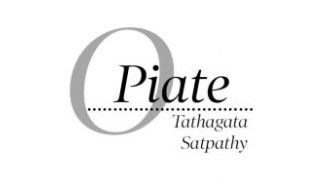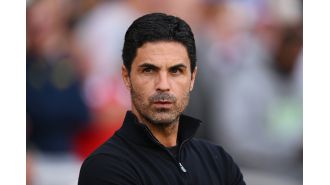Charlottesville’s Other Jim Crow Legacy: Separate and Unequal Education
The Virginia city has one of the widest achievement gaps in the U.S., and a ProPublica/New York Times analysis shows that white students there are about four times as likely as black students to be considered gifted.

CHARLOTTESVILLE, Va. — High school seniors Zyahna Bryant and Trinity Hughes have been friends since they were 6 years old, raised by blue-collar families in this affluent college town. They played on the same T-ball and softball teams and were in the same church group.
But like many African-American children in Charlottesville, Trinity lived on the south side of town and went to a predominantly black neighborhood elementary school. Zyahna lived across the train tracks on the north side and was zoned to a mostly white school, near the University of Virginia campus, that boasts the city’s highest reading scores.
In elementary school, Zyahna was chosen for the district’s program for gifted students. Since then, she has completed more than a dozen Advanced Placement and college-level courses, maintained a nearly 4.0 average, and has been a student leader and a community activist. She has her eyes set on a prestigious university like UVA.
“I want to go somewhere where it shows how much hard work I\'ve put in,” said Zyahna.
Trinity wasn’t selected for the gifted program. She tried to enroll in higher-level courses and was denied. She expects to graduate later this school year, but with a transcript that she says won’t make her competitive for selective four-year colleges.
“I know what I’m capable of and what I can do,” Trinity said, “but the counselors and teachers, they don’t really care about that.”
For every student like Zyahna in Charlottesville’s schools, there are scores like Trinity, caught in one of the widest educational disparities in the United States. Charlottesville’s racial inequities mirror college towns across the country, from Berkeley, California, to Evanston, Illinois. But they also match the wider world of education, which is grappling with racial gaps — in areas from gifted programs to school discipline — that can undercut the effort to equitably prepare students for college in a competitive economy.
The debate over the city’s statue of Robert E. Lee and the white supremacist march last year set Charlottesville apart and spurred it to confront its Confederate past. But the city hasn’t fully come to terms with another aspect of its Jim Crow legacy: a school system that segregates students from the time they start and steers them into separate and unequal tracks.
Charlottesville is “beautiful physically and aesthetically pleasing, but a very ugly-in-the-soul place,” said Nikuyah Walker, who became its first black female mayor during the self-recrimination that swept the city after last year’s white nationalist rallies. “No one has ever attempted to undo that and that affects whether our children can learn here.”
Today, white students make up 40 percent of Charlottesville’s enrollment, and African Americans about a third. But white children are about four times as likely to be in Charlottesville’s gifted program, while black students are more than four times as likely to be held back a grade and almost five times as likely to be suspended out of school, according to a ProPublica/New York Times examination of newly available district and federal data. (Look up your school, district, or state in ProPublica’s interactive database.)
Since 2005, the academic gulf between white and black students in Charlottesville has widened in nearly all subjects, including reading, writing, history and science. As of last year, half of all black students in Charlottesville could not read at grade level, compared with only a tenth of white students, according to state data. Black students in Charlottesville lag on average about three and a half grades behind their white peers in reading and math, compared with a national gap of about two grades.
Over the decades, school board members have often brushed aside findings of racial inequality in Charlottesville schools, including a 2004 audit — commissioned by the district’s first African-American superintendent — that blamed inadequate leadership and a history of racism for the persistent underachievement of its black students.
Officials in the 4,500-student district — which spends about $16,000 per pupil, one of the highest rates in the state — instead point to socioeconomic differences; the vast majority of Charlottesville’s black children qualify for free or reduced-price meals at school because of low family income. District leaders say they are tackling the achievement gap, with initiatives such as eliminating prerequisites for advanced classes. Besides, they say, test scores are only one measure of success.
“I’m not trying to make excuses” for the test scores of black students, said Rosa Atkins, the district’s superintendent for almost 13 years, “but that’s only one measure of where they are, and who they are, and their capabilities for success.”
About a third of the 25 districts with the widest achievement disparities between white and black students are in or near college towns, according to a review of data compiled by researchers at Stanford University. That may be because affluent families in university towns invest a large proportion of their resources in their children’s education, said Sean Reardon, a professor of education at Stanford. In such communities, “disparities in resources — between white and black students, for example — may be more consequential,” Reardon said.
Atkins said that it’s unfair to compare black students with white classmates who attended the best preschools and have traveled abroad. “The experiences that they bring into our school system are very different,” she said. “When we start saying that until you start performing like white children, you have a deficit, I think that in itself is discrimination.”
Still, socioeconomics don’t fully explain the gap. State exam data shows that, among Charlottesville children from low-income families, white students outperformed black students in all subjects over the last three years. The same pattern holds true for wealthier students.
And in the last year, even the city’s immigrant students who are learning English have outperformed black students on state exams in every subject.
Atkins said that what doesn’t show up in test scores is how far behind black children start and how they sometimes have to acquire two years’ worth of skills in just one year.
“I dare say that our black children are performing better than our white children” when their progress is considered, she said. “That tells me that our children have resilience, tenacity and ability far superior than what we’re giving them credit for.”
Among white parents, last year’s rallies have fostered franker discussions of racial inequality, said one of them, Guian McKee, a UVA associate professor. “There’s been a lot more openness to some of those challenging conversations,” he said.
At their predominantly black elementary school, McKee’s two children participated in the gifted program, which is about three-quarters white. Such disparities, at odds with Charlottesville’s reputation as a bastion of Southern progressivism, have long been a taboo topic, he said.
“For a lot of people, it’s really uncomfortable to see that even if you haven’t personally done anything wrong, you’re part of larger structures that contribute to producing poverty and inequality, including in educational outcomes,” McKee said.
Much like its Confederate past, Charlottesville’s history of school segregation weighs heavily on the present day. “I don’t think the hate groups selected our community by chance,” Atkins said.
Charlottesville greeted the Supreme Court’s 1954 Brown v. Board of Education desegregation decision with a firm no. In 1958, Gov. J. Lindsay Almond ordered the city to shut down two white-serving public schools rather than integrate.
Many white families opted for private schools, which were able to secure public funding through voucher-like tuition grants. Under pressure from the Supreme Court of Virginia, Charlottesville reopened its schools in 1959, allowing a dozen black students to attend its historically white schools.
But the city’s resistance to integration persisted. Instead of outright segregation, the white-led district established testing requirements solely for black students who tried to enroll in historically white schools. It also allowed white students who lived in attendance zones of historically black schools to transfer back to predominantly white schools. Black students who lived near mostly white schools were assigned to black schools.
After a federal appeals court invalidated the district’s attendance policies, the city relied more closely on residential zones to sort students.
In 1984, Charlottesville High School ignited after the student newspaper published derogatory remarks about black students. The high school was shut down for a day. “Seniors for White Supremacy” was painted in its parking lot.
Two years later, the board considered redrawing school zones to bolster racial and economic equity, but it worried about white flight. In the end, elementary school boundaries were largely left alone. The district pooled the city’s middle school students into two schools, one serving all fifth- and sixth-graders, and the other serving all seventh- and eighth-graders. The number of white students declined about 20 percent within a decade.
Other efforts to reshape attendance zones faced resistance. In 2003, a predominantly black group of families asked to send their children to Venable, one of the historically white schools that had closed rather than integrate. Venable, which Zyahna would later attend, has the highest reading proficiency of all elementary schools in the city.
The black families lived several blocks from Venable and had grown frustrated by their children’s long commutes to their zoned school. But when the board proposed reassigning the 20 children, white parents from Venable “freaked,” said Dede Smith, then a school board member.
“We will NOT accept redistricting when it is done, as in this situation, sloppily and hurriedly and in a way which negatively impacts the quality of education for all students involved,” read a letter from the Venable parent-teacher organization. It took a year for the board to rezone the children to Venable, according to Smith. Today, some black families are able to send their children there, but residents of a mostly black public housing complex nearby are not among them.
“We only put our toe in the water,” Smith said.
The following year, in 2004, the school board hired Scottie Griffin as superintendent. She tapped a respected education association to review inequities across the district. The report by five academics revealed a deeply fractured school system.
“While some members of the community might wish for an elongated period of time to ponder and debate changes, the children are in school only once and then they are gone,” the audit concluded. “No city can survive by only serving one half its constituents well. The future of such a legacy is dire.”
The auditors pushed for increasing black students’ access to high-level academic programs, including gifted and Advanced Placement courses.
Kathy Galvin, a parent who is now a City Council member, responded to the audit in an internal memo to the school board, urging the board to reject the racial bias findings, which she called “unnecessary and in fact harmful,” and implored members to focus on improving “our educational system for the benefit of all children.”
Today, Galvin largely stands by that position. “A ‘too narrow and racially biased’ focus on the schools does a disservice to the dedicated educators who have made a difference and risks misdiagnosing a complex problem, leading to ineffective solutions,” she said.
In 2005, within a year of her hiring, Griffin was pushed out. She did not respond to questions from the Times and ProPublica.
Atkins said she has incorporated some of the audit’s recommendations, such as data-driven decision-making and a reorganization of central office staff, into the district’s strategic plan.
One of the audit’s central focuses was the city’s gifted program, known as Quest. As white enrollment in the city’s schools contracted over the years, the program tripled in size, according to an analysis by a UVA researcher, largely benefitting the white families who remained.
To black families, segregation had returned by another name.
“Everyone wants the best for their kid, but this has been the thing that has helped drive the segregation engine,” said Lisa Woolfork, an associate professor at UVA and member of Black Lives Matter Charlottesville, whose children attend Charlottesville schools. “I have always been of the opinion that this type of internal segregation is the way to keep white people in the public schools. This is a way that white supremacy undergirds the public school system.”
In 1984, only 11 percent of Charlottesville’s white students qualified as gifted, according to federal data from the UVA analysis. By 2003, according to the audit, about a third of white students qualified, the same proportion as today. White students make up more than 70 percent of the district’s gifted students.
When students are selected for Quest, they are pulled out of their regular classrooms for enrichment sessions in academics and arts with a specialized teacher in a designated classroom.
“When people bring up Quest, we get angry,” Trinity said. “We all wish we had the opportunity to have that separate creative time. It drives a gap between students from elementary school on.”
For children who read below grade level, the city offers a supplemental program called Extending the Bridges of Literacy. But the literacy program takes place after school, and it is taught by any instructors who volunteer to extend their workday for extra pay, regardless of whether they have specialized intervention training.
Racial inequities persist into the high school’s Advanced Placement courses, which provide students with college credits. White students in Charlottesville are nearly six times as likely to be in AP courses as their black peers, according to recently released federal data.
“There is an incentive to segregate these kids,” Smith said. “I don’t think the schools see anything positive in an academic mixing pot because the white parents will leave.”
In the last two years, Charlottesville High administrators have introduced staff training on racial inequalities. Teachers have participated in professional development that included studying “equity-based teaching,” lessons in Charlottesville’s local black history and Civil War history, and workshops on implicit bias. The school’s principal also set up focus groups and surveyed high-performing black students about underrepresentation in advanced courses.
Atkins has introduced other initiatives aimed at reducing the achievement gap. Besides abolishing prerequisites for advanced courses, she created a “matrix” that families could follow to map out a sequence of coursework. She also has tried to remedy the underrepresentation of minorities and girls in science electives by giving every middle schooler an opportunity to take an engineering course.
The school district has also expanded what it calls “Honors-Option” courses, in which students can opt to meet requirements for regular or honors credit.
Jennifer Horne, an English teacher at Charlottesville High School, called her honors-option course “the most beautiful place in the building. You’ve got struggling readers and kids who are way smarter than me in the same room.” She said she is able to pose the “big questions,” which are usually reserved for advanced courses, and identify students with untapped potential.
With the help of a scholarship, Zyahna attended preschool to first grade at an elite private school. Her preparation helped her to pass an admission test for the gifted program after she entered Venable. As she got older, church members who worked in the schools advised her on the programs and classes she needed to stay on pace with her white peers.
Zyahna felt isolated in the sea of white faces. She became an activist, founding the Black Student Union, petitioning the City Council to remove the Lee statue and speaking out at school board meetings about the achievement gap. “It has caused me to become even more of an advocate for people of color, just for my blackness, because you enter into this whole sunken place when you get into honors and AP courses,” she said.
Zyahna likened her high school experience to shopping because students have to scout out the best deals. “You literally have to go ask for everything yourself, and not everyone has those skills or confidence.”
Trinity said she lost that confidence as teachers repeatedly rejected her requests to enroll in higher level courses. She tried to take Algebra II her junior year, an essential course for many colleges. Trinity had struggled early in a geometry course but had stayed after school, sought tutoring and earned a B. She figured that she could work just as hard in Algebra II.
Her geometry teacher wouldn’t allow it, Trinity said. The teacher declined to comment on individual students. School officials said that a student’s performance in geometry isn’t the only factor in a teacher’s recommendation for Algebra II.
Trinity’s mother, Valarie Walker, fought for Trinity to take higher level courses, but school personnel didn’t “want to listen to what the black kids have to say,” she said.
“I don’t think our voices were as strong as they needed to be,” she said. “They kept saying, ‘This would be better.’ I think we gave up fighting.”
In Charlottesville’s schools, the mantra is graduate by any means necessary. Bring up anything else — test scores, suspension rates — and Atkins counters, “We prefer to focus on the long-term goals, and the long-term goal is graduation.”
About 88 percent of black students graduate, just under the state average for African Americans, and up from 66 percent a decade ago. They trail their white peers by about 8 percentage points. The district\'s graduation rate, 92.6 percent, is at its highest since the segregation era, said Atkins.
But all diplomas are not equal. About three decades ago, Virginia established a two-tier diploma track, in which districts award “standard” or “advanced” diplomas based on a student’s coursework. It’s one of at least 14 states with this kind of approach. Three years ago, the state superintendent of public instruction proposed moving to a single-diploma system but backed off when parents complained.
The advanced diploma requires students to complete an additional credit in mathematics, science and history and mandates students to take at least three years of a foreign language; for the standard diploma, learning a language is not compulsory. Starting as early as middle school, honors and accelerated courses put some students on a path to advanced high school credits. In Charlottesville, about three-quarters of white students graduate with an advanced diploma, compared with a quarter of their black peers.
The type of diploma that students receive overwhelmingly dictates whether they enroll in two- or four-year colleges, or move on to higher education at all. In Virginia, only a tenth of students with standard diplomas enroll in a four-year college, a recent study found.
Atkins acknowledged that some minority students may be discouraged from taking higher-level courses that could qualify them for better colleges and said the district will remind parents to bring these rebuffs to her attention. Mayor Walker, whose son is a sophomore at Charlottesville High, said some attitudes haven’t changed: “There have been a lot of people who just don’t believe in the potential of our kids.”
Since middle school, Trinity’s goal has been to attend James Madison University in Harrisonburg, Virginia. She has gained enough credits for an advanced diploma. But last month she learned that she would need a math class higher than Algebra II to gain admission.
A university representative recommended she go to community college, and possibly transfer to James Madison. Michael Walsh, dean of admissions at James Madison, said 99 percent of students it accepts have gone beyond Algebra II.
She was crushed: “It made me realize I really haven’t been prepared like the rest of the students to be ‘college ready.’”
Zyahna’s achievements make her a prime candidate for an elite university. So she was taken aback when, as she was beginning her search, her principal encouraged her to explore community college. The principal says the context was a broad discussion with black student leaders about community college as an affordable option.
That’s not how Zyahna heard it.
“No matter how high your scores are or how many hours you put into your work, you are still black,” she said. “There’s a whole system you’re up against. Every small victory just cuts a hole into that system reminding you how fragile it is. But it’s still there.”






